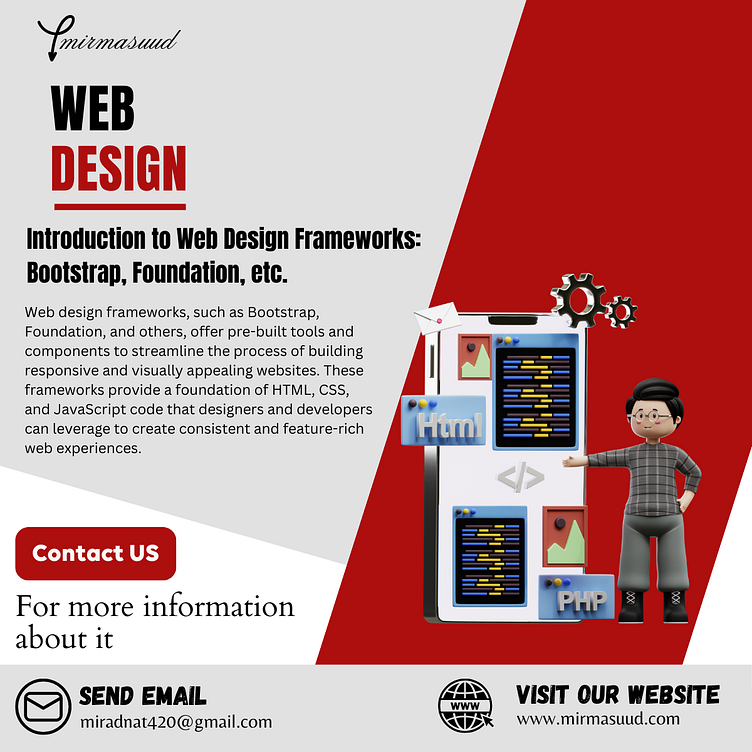Introduction to Web Design Frameworks
Introduction to Web Design Frameworks: Bootstrap, Foundation, etc.Web design frameworks, such as Bootstrap, Foundation, and others, offer pre-built tools and components to streamline the process of building responsive and visually appealing websites. These frameworks provide a foundation of HTML, CSS, and JavaScript code that designers and developers can leverage to create consistent and feature-rich web experiences.Bootstrap, one of the most popular frameworks, offers a wide range of components, including grids, navigation bars, forms, and modals, along with customizable CSS styles and responsive utilities. Similarly, Foundation provides a robust set of UI components and responsive design tools for building flexible and accessible websites.By using web design frameworks, designers can expedite development, ensure cross-browser compatibility, and maintain consistency across projects. These frameworks also facilitate responsive design, allowing websites to adapt seamlessly to various screen sizes and devices.While frameworks offer many benefits, designers should also be mindful of their limitations and avoid over-reliance on default styles and components. Customization and optimization are key to creating unique and high-performing websites that stand out in the crowded digital landscape.In conclusion, web design frameworks are powerful tools that enable designers to create efficient, consistent, and responsive websites, ultimately enhancing the user experience and achieving project goals.









